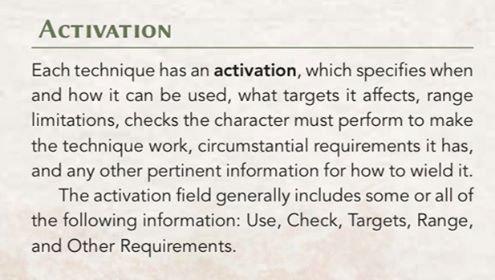I thought I had a good grasp of the Agasha Mystic's School Ability, Elemental Transmutation, on my first read. Now that I'm actually making the character, I'm not too sure. I have a few questions for when the School Ability is being used.
A. In any instance where stances aren't a factor, the ability is perfectly clear to me. When stances are a factor, how am I allowed to use the ring swap feature? Which one of these, if any, is correct?
- I'm in Water stance; I can use a non-Water invocation using my Water ring
- I'm in Water stance; I can use Water Invocation using one of my non-Water ring
- I'm in Water stance; I can use a non-Water using one of my non-Water ring
I assume only 1. works since stances lock you into a ring for checks, unless this is one of the exceptions.
B. The ability only specifies the ring swap feature "to make the check." Does this mean that other than the check itself (the roll), every thing else about the invocation that references a ring (deal damage = X ring, number of targets = X ring, etc.) stay as the original element? Or are those swapped to the new element as well, treating the entire invocation as "the check?"
C. This may or may not be dependent on or related to B. For the opportunity stipulation, my instincts say this is referring to the general invocation opportunities. How does this interact with the new opportunities unique to a specific spell, all of which are naturally labeled with the spell's original element? Because they are categorized as opportunities of the original element, they cannot be activated when using the ability?
Thanks in advance!


